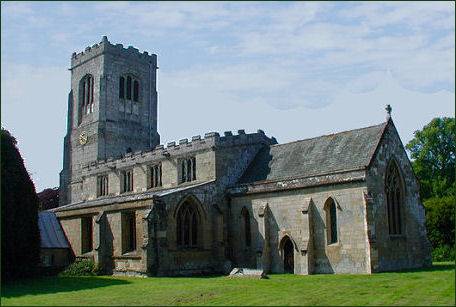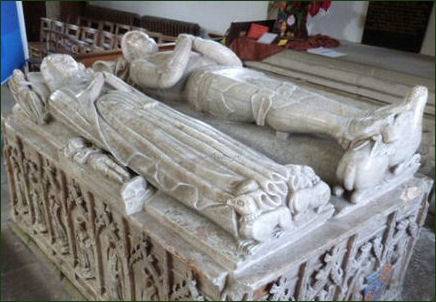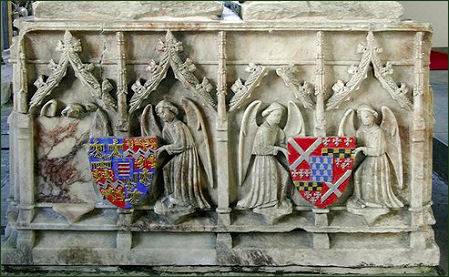St. Martin's Church, Burton Agnes
OS grid reference:- TA 102 632
St Martins Church dates to the thirteenth century and is Grade I listed building. It stands on a hillside behind historic Burton Agnes Hall. The church is approached through an arch formed by the branches of tall yew trees.


On the walls of the nave are several large Boynton family hatchments. The box pews in the nave date from 1730 and there is a tall wooden family pew with red padded seat set between the arches on the north arcade.
 In the Lady Chapel, at the east end of the north aisle are the tombs to the owners of Burton Agnes manor. An ornate table tomb with a pair of effigies placed in the centre of the chapel is the tomb of the 'Dark Knight', Sir Walter Griffith (died 1481), and his wife. Both hold their hands in prayer. He is in armour. Resting by his wife are two small figures, presumably of their children. Round the base are carved figures and at the ends, angels holding painted shields. During the Wars of the Roses Sir Walter Griffith fought for the Lancastrians.
In the Lady Chapel, at the east end of the north aisle are the tombs to the owners of Burton Agnes manor. An ornate table tomb with a pair of effigies placed in the centre of the chapel is the tomb of the 'Dark Knight', Sir Walter Griffith (died 1481), and his wife. Both hold their hands in prayer. He is in armour. Resting by his wife are two small figures, presumably of their children. Round the base are carved figures and at the ends, angels holding painted shields. During the Wars of the Roses Sir Walter Griffith fought for the Lancastrians.
To the north of the Griffith tomb is a wall monument to Sir Henry Griffith (died 1654) and his first two wives. Other monuments to members of the Griffith, de Somerville, and Wickham-Boynton families are arranged about the chapel.
In the chancel is a stone carving of William Wilberforce, placed there by his son Robert, who served as rector of Burton Agnes from 1840-1845. Robert Wilberforce also presented the east window in memory of his father.
The church also contains a Norman font which is decorated with interlaced arcading. The font was discovered in the rectory being used as a flower bowl after being lost for many years. The oak cover was carved by the Robert Thompson the 'Mouseman' studios of Kilburn, who was also made the lectern.
The organ was built by Henry Willis and Son of London, and is purported to have been brought to Burton Agnes from Rudston Hall.
